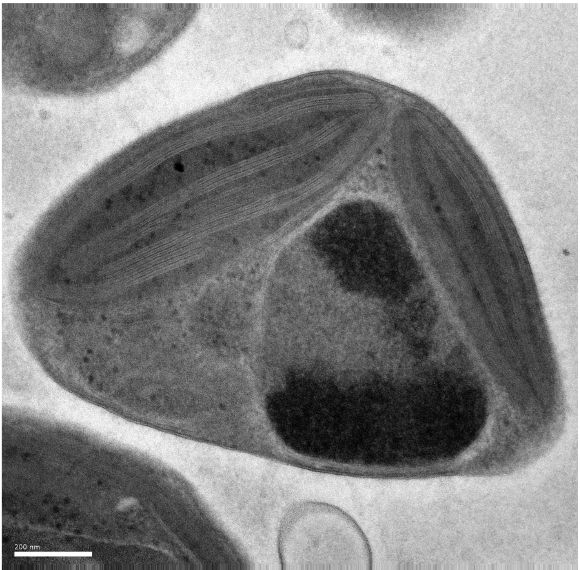
Transmission electron microscopy image of O. tauri strain RCC4221. (credit: Martin Hohmann-Marriott)
Ostreococcus, microscopic green algae at the base of many marine food webs, are considered a model species to study marine picophytoplankton. A decade after the complete representative genomes of three Ostreococcus groups were sequenced, an international team of researchers including scientists at the Department of Energy Joint Genome Institute (DOE JGI) have resequenced and analyzed the genomes of 13 members of a natural population from the northwest Mediterranean Sea. The analysis revealed that the O. tauri population is larger than anticipated, with high genetic and phenotypic diversity that is influenced by the algae’s natural resistance to ocean viruses. Understanding the genetic variability of various Ostreococcus strains will help researchers understand how environmental changes affect their abundance and ability to photosynthesize. The work was reported in Science Advances. Read more in this DOE JGI Science Highlight.




